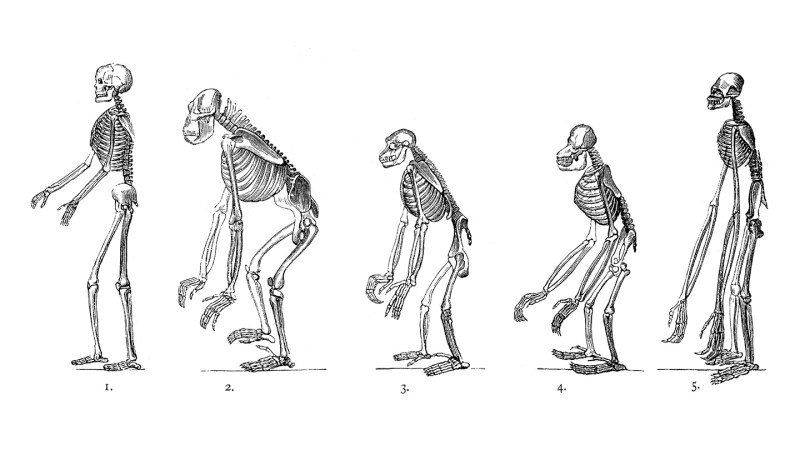
Two small genetic changes played a pivotal role in transforming the human pelvis, enabling early humans to walk upright, according to research published in the journal Nature on September 25, 2023. This study, led by evolutionary biologist Gayani Senevirathne from Harvard University, highlights key shifts in pelvic development that differentiate humans from other primates.
Genetic Changes Reshape Human Anatomy
The first genetic alteration involved a 90-degree rotation of the ilium, the bone situated at the top of the pelvis. This adjustment reoriented the muscles attached to the pelvis, transforming a structure suited for climbing and four-legged movement into one that supports bipedalism. The second change extended the duration it takes for the ilium to mature from soft cartilage into solid bone.
These modifications resulted in a distinctive bowl-shaped pelvis, crucial for supporting an upright posture. While nonhuman primates can occasionally walk upright, they predominantly move on all fours. The findings indicate that these genetic shifts were essential for repositioning muscles to facilitate walking on two legs.
Co-author Terence Capellini explained, “The changes allowed muscles that typically assist in forward motion to be repositioned on the sides, enhancing our ability to maintain balance while walking.”
Research Methodology and Findings
The research team examined developing pelvic tissue samples from humans, chimpanzees, and mice using microscopy and CT imaging. They discovered that human ilium cartilage grows sideways rather than vertically, as seen in other primates. Furthermore, the cartilage transitions to bone more slowly, allowing for greater expansion and the maintenance of a wide, bowl-like shape during growth.
The genetic analysis linked these changes to biological mechanisms that regulate gene activity. In humans, genes responsible for cartilage formation are activated in regions of the growing ilium that promote horizontal growth. In contrast, bone-forming genes are activated later and in different areas, delaying the hardening process and enabling the pelvis to expand sideways.
These insights suggest that the genetic rewiring occurred early in the evolutionary lineage of hominids, following the divergence of humans from chimpanzees. The study reinforces a significant concept in evolutionary developmental biology: major anatomical changes often arise from subtle modifications in the timing and location of gene expression, rather than from entirely new genetic material.
According to anthropologist Carol Ward from the University of Missouri in Columbia, “This work illustrates how critical these changes were for enabling bipedalism, particularly the capacity to stand on one foot, which is fundamental for walking on two legs.”
Implications for Evolution and Health
The research, initially funded by the National Institutes of Health for biomedical purposes, aimed to enhance understanding of pelvic and knee formation to address hip disorders. Capellini noted, “Our goal was to explore how the pelvis develops and why it differs from other primates and mice, particularly regarding disease susceptibility.”
Interestingly, the very adaptations that facilitated upright walking may also contribute to a higher prevalence of osteoarthritis in humans compared to other primates. Capellini posits that the broader hips resulting from these changes might have also enabled a more spacious birth canal, potentially facilitating the evolution of larger-brained infants. “It raises an intriguing theoretical question,” he stated, “but it could have practically influenced the course of brain evolution.”
This groundbreaking research not only sheds light on the anatomical evolution of early humans but also opens avenues for further studies into the implications of these changes for human health and development.







